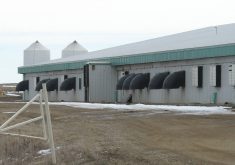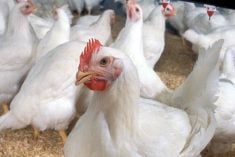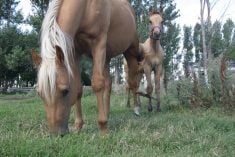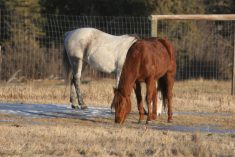The Canadian Food Inspection Agency has released proposed amendments to its humane livestock transportation regulations, the first significant update of rules that date back to 1997.
The regulations are available for comments from farm and other organizations until Feb. 15.
Livestock groups say they’re studying the lengthy documentation and would offer any suggestions by the February deadline. After that, CFIA will assess the comments from them and other organizations before drafting the final version, which will likely appear this fall. They will come with a year-long implementation period.
Read Also

VIDEO: Watering system a cattle health win
Portable livestock watering system helps Manitoba beef producer combat foot rot cases on pasture.
Cornelius Kiley, CFIA’s national manager of animal welfare, biosecurity and assurance programs, said in an interview he doesn’t expect the groups will find any surprises in the proposals.
CFIA has been involved in the discussions on animal care codes conducted by the National Farmed Animal Care Council, which include humane transport provisions.
“We’ve been having this discussion for 10 years,” Kiley said.
The transport rules under the care codes are voluntary, while the CFIA regulations will be enforced by inspectors. However, the codes of practice will still supply the details anyone needs for complying with the new regulations, he adds.
Protecting animal welfare in Canada is a shared responsibility between the federal and provincial governments, industry, producers, transporters, processors, registered slaughter establishments and the public, CFIA says.
Kiley notes that when the previous regulations were set almost 40 years ago, the railways moved a lot of livestock. Now it’s entirely done by truck.
The proposed regulations cover everything from assessment of livestock’s fitness for transport to dealing with unfit and compromised animals and shipments in hot and cold weather. Rules for feed, water and rest every 12 hours are also set out.
“Transportation is one of the most stressful events that an animal will experience during its life due to the unfamiliar surroundings, noises, vibrations and movements, the proximity to humans, handling and unfamiliar animals, exposure to adverse conditions, and the lack of access to feed and water,” the CFIA announcement says. “An animal’s condition can deteriorate quickly in these circumstances.”
The proposed regulations are intended “to better align Canada’s requirements with current industry practices, international standards, new science and societal expectations about the proper care and transport of all animals into, within and out of Canada.”
The process of animal transport begins with planning the transport, assembling the animals, loading, confinement in a crate or conveyance for the purpose of transport, transporting the animals and ends with unloading the animal from the conveyance or container.
CFIA documents say a small portion of commercial carriers that transport animals by land would bear additional costs, but the majority would see no significant change.
“An estimated 98 per cent of all shipments are already in compliance with the proposed amendments,” the CFIA wrote. “Some processors in the poultry industry may experience incremental costs associated with changes in management practices, but will realize cost savings in relation to the benefits resulting from these changes. The present value of the total industry costs is estimated to be approximately $3.9 million.”
In addition to improving animal welfare, the proposed amendments would reduce transport losses and improve marketability and product quality, leading to benefits for consumers.
CFIA also said the amendments would align Canada better with international animal standards such as those from the OEI, and those of trading partners like the United States, the European Union, Australia and New Zealand.
“While the industry generally demonstrates good compliance with the present regulatory requirements, new science-based information that provides greater insights into animals’ needs is available,” CFIA said.
With the better and clearer guidelines, CFIA said its ability to enforce them will improve.















